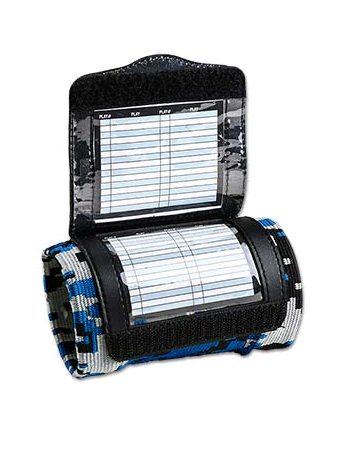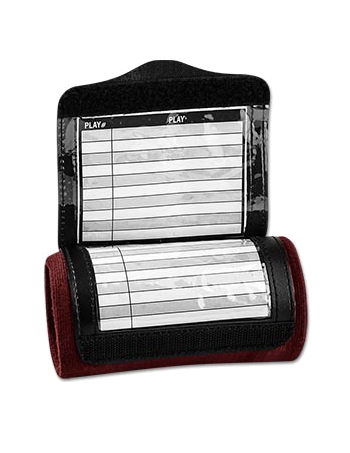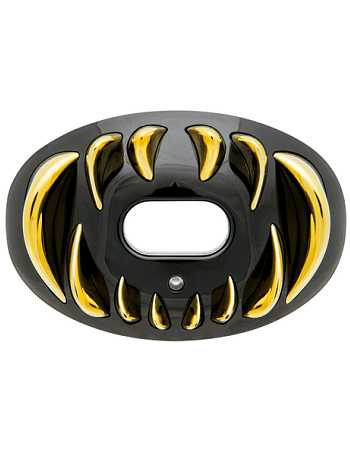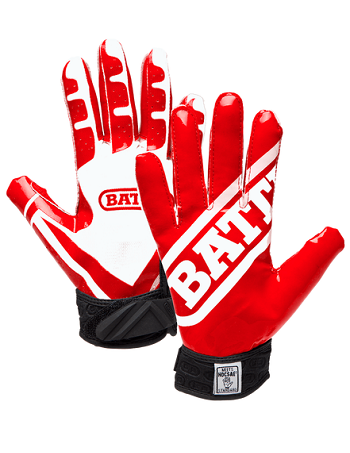
Translations of this article are also available in the following languages:EspañolFrançaisItalianoPortuguês
With approximately 1,600 American football teams in Europe and new clubs popping up every week, there is significant interest in maximizing profitability for these organizations. Many teams understand the basics of building a budget, but most have yet to tap into the full extent of profit models available to them. We’ve spoken with teams from all across Europe and have compiled a list of some of the most viable profit models out there. You may be using some of these already, but few are accessing the full variety of options available to them. We hope that this list helps you to identify the missing piece(s) for your organization and allows you to take the next step forward.
Here are the top 10 ways to build a profitable football team:
1. Subscription
In most scenarios, this is the best way to get a new team off the ground. Charging a yearly membership fee to your players will enable your organization to build a starting budget with which to pay for the use of practice and game facilities, equipment, insurance, and so on. Almost every team does this and for good reason – a brand new team rarely has much value that it can provide for sponsors and most teams don’t have a million euro budget in place on Day 1.
If you’re going to charge your players a yearly subscription fee, make sure it covers at least your basic operating costs and insurance fees for each player. Conversely, it needs to be a number that is not too high that it discourages some players from participating due to their own financial circumstances. Do your best to be inclusive so that anyone can afford to participate.
2. Sponsorship
Corporate sponsorship is simultaneously the most alluring and most elusive of all profit models. A major sponsorship from the right company can literally change the fortunes of your entire organization. The issue, of course, is that selling the value of a sponsorship can be difficult without the right approach. However, if you have the capacity to prove a return on investment your possibilities are endless.
The good news is that the opportunities to attract sponsors are limitless. There are an infinite number of companies out there, and almost all of them would benefit from the right type of sponsorship. Plus, there are a multitude of sponsorship options that you can offer to your potential sponsors. Companies can sponsor your team’s uniforms, website, or social media page, you can use their names on banners, t-shirts, or team programs, and you can offer them tickets, merchandise, or introductions. There are countless ways to express value, so the only limitation is your own creativity.
Lastly, make sure you develop a professional sponsorship deck to offer to sponsors. You can hire someone to do this for you or you can get started on your own here: Why You Should Sponsor American Football.
3. Digital advertising
Providing advertisement on your team’s website is a small but relevant way to built some extra income for your organization. If you’re getting high traffic to your website then this method is even more valuable to your team or potential advertisers. Be sure to provide website analytics to your advertisers to let them see how many views and clicks that their ads are getting per month. This is not only professional but it also allows advertisers to see that they’re getting a return on their investment.
4. Corporate volunteering
Many companies benefit from offering volunteer work to local clubs or organizations. Whether it is tax-related, cost-effective, or it simply allows their employees some needed time off, it can be a great way for your team to add some more cash flow. Let’s use this example: Company A normally offers its employees 15€ per hour to inventory everything in their warehouse twice per year. Instead of paying its employees 15€ per hour to spend extra time to do something they don’t really enjoy, Company A can pay a local sports club 10€ per hour per person to do the same work. It’s volunteer work for the players, but this adds additional funds to the team’s budget. Players only need to contribute 15-20 hours per year, for example, and that can help the team cover some basic costs. This strategy is incredibly common in Scandinavian countries and should be practiced more often elsewhere in Europe. Contact a local company and offer to provide some discounted labor. Perhaps this partnership may also be a segway to a corporate sponsorship at some point.
5. Equipment
This is the most under-utilized profit model of them all. First and foremost, teams should be buying standard equipment for their players so that they have easy access to equipment when it is needed. You don’t want to make new players drive to some far-off town to buy new equipment when you could just as easily buy that same equipment and have it available to sell to them as needed. Also, it is in your best interest to mark up the price a little bit so there is a small profit from every exchange. Players are happy to spend a small percentage more if it saves them the trouble of driving 2-3 hours roundtrip to buy equipment. You should invest in buying enough player kits to offer to new players, and you should always have basic equipment on-hand in case of an emergency (lost, broken, or poor-fitting equipment, for example).
In addition to selling equipment, teams should also be renting equipment to players as well. Some players may not be able to afford a full kit, so it may be more financially viable for them to rent one on a yearly basis. This benefits everybody – the player doesn’t have to pay much upfront and the team benefits financially while still owning the equipment. It’s a win-win. Just make sure that you sign an agreement with your players to ensure that they will return the equipment at the end of the season.
Lastly, buying equipment back from players can be very lucrative as well. Players often retire, move away, or quit altogether, and they’re happy to get some cash for their used equipment. If you buy the equipment back at a reasonable price, you can then sell or rent that equipment to any of your other players. If you buy the equipment back for a low price and sell it at a higher price, you can make some additional profit as well.
The more sophisticated your equipment system is, the more reliable it will be for your players and the more profitable it will be for your organization. This is something that every team needs to get right.
6. Sell equity
For-profit teams always have the option to sell a percentage of ownership rights to potential buyers. All major businesses do this at some point, particularly when they have ambitious goals but lack the funds to get them there. It’s an efficient way to introduce significant capital into your team’s budget, but it also comes with a major sacrifice: you’re giving up more in the long run for a short-term gain. Giving up equity, or ownership, to someone new can limit your profits and may also slightly change the direction of the team. Usually people who invest money into team ownership won’t do so without having some influence over the way the team is run. Conversely, with an infusion of cash into your organization it could ultimately make your team far more profitable than you could have ever achieved on your own. Just take some time to understand the consequences before bringing minority partners into your organization.
7. Ticket sales
Selling tickets is pretty self-explanatory, but there is an art to it. It is your responsibility to build your team’s playing level to a point where fans are willing to spend money to see you play. Once you can achieve this, you need to find an appropriate price that people are willing to pay. If it’s too high it will hurt your attendance, but if it’s too low it decreases the perceived value of attending a game. This is usually a process of trial and error, but eventually you’ll find a price that make sense for everyone. The most successful teams also find innovative ways to sell tickets in other ways besides on game days.
8. Merchandise
Selling team jerseys, t-shirts, hats, sweatshirts, and more can have massive implications. It not only allows you to earn a substantial profit, but it has the dual-effect of advertising your team’s brand. Every time a fan wears your team’s apparel in public, it creates further awareness for your team and ultimately will help bring in more fans. This is a positive feedback loop that you definitely want to be a part of. There are several equipment and apparel manufacturers out there that would be happy to have your business. Make sure you do your research and select the company that best meets your needs.
9. Government grants
Government funding and grants vary widely by country, so the responsibility of researching these options rests with you. Most opportunities are open to either non-profit organizations or youth programs, which may or may not be relevant to you. If your team falls under these characteristics then there are several ways to apply for government assistance to help boost your organization.
10. Share or cooperative model
Some teams such as the NFL’s Green Bay Packers or the U.K.’s own Hastings Conquerors have established cooperative models that open share purchasing to loyal fans. These fans have the opportunity to purchase a non-equity share in the club, giving them the right to vote on specific measures and allowing them access to inside information regarding the team. It’s an excellent way to produce funds for the team and aggregate a loyal following for your team without turning over equity to anyone, however it does result in permitting some of the direction of the club to be controlled by the masses. This may be valuable for your club, or it may not. Ultimately, that’s up to you to decide.
What are your thoughts on this list? Do you have another profit model you’d like to add? Please let us know in the comments section below.








